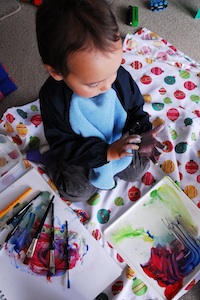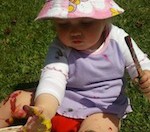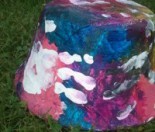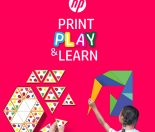Most of us think a child’s tendency to be creative is predetermined at birth by genetics but it can also be strongly influenced, both positively and negatively by their experiences. Whether your strength with creativity is in music, storytelling or art, you can help enhance your child’s creativity through fun, engaging activities that encourage exploration and discovery. Fostering this creativity in the early years creates a strong foundation which they will benefit from for the rest of their lives.
Why do we want our children to be creative?
Allowing your child to be creative means so much more than them being able to sing a song in tune or draw a great picture. Children who are encouraged to think creatively:
- Show increased levels of motivation and self esteem
- Have healthy outlets for emotions through self expression
- Enhances adaptability and flexibility of thought
- Stimulates brain development by increasing pathways and making connections
How to encourage creativity in infants and toddlers
An effective, easy and affordable way to do this is through heuristic play. Heuristic play comes from the Greek word meaning to discover and is a term broadly used to describe active exploration and discovery. A main feature of this play is learning through the senses, as this is the primary way that infants learn.
At home you can start by creating a ‘treasure basket’. Choose a basket or box with low sides so that your child can see, choose and reach the objects inside. When collecting objects for the basket think of the phrase ‘one persons junk is another’s treasure’. Look for contrasting textures, sizes and shapes. Objects which are common place to us are new and interesting in the eyes of an infant or toddler. As they explore infants and toddlers put objects in their mouths so be sure to ensure the object is safe with no sharp edges and that it cannot be swallowed. You can make learning resources with the children out of house hold objects, like making a fire engine out of an old dishwasher container.
Suggested items for your treasure box
(Safety note – as with all play this must be supervised due to any choking risk)
- Natural materials – shells, bark, stones, flowers, feathers, pieces of fruit.
- Scraps of material including silks, wool, denim or faux fur.
- Kitchen items such as spoons, measuring cups, whisks, egg beaters and different sized containers and lids.
- Egg cartons, yoghurt pots and empty grocery boxes.
- Scarves, hats and containers safely sealed with buttons or beads.
- The items in the basket can be changed every few days and smaller treasure baskets can be hidden for a crawling child to discover.
There is no right or wrong way to do this type of play and no expected ending or finished product which is why it encourages creativity. The learning occurs during the process of doing. A toddler may be fascinated with how an egg beater turns or spend time working out what lids fit on what container. What noise do the keys make if they are put in the plastic container compared to the wooden one? Through this play your child is not only developing their creative side, but also math, science and problem solving skills.
We have all heard the stories of an expensive toy being bought for a child and then the child spending most of the time playing with a cardboard box. This shows children’s natural desire to be creative. A box can be a space ship, a cave, a bus, a house a pirate ship and more.
Creativity and a desire to explore and investigate are also the reasons that children can play at the beach for hours collecting sticks, digging and building in the sand, collecting water and just enjoying the sensory feeling of sand between their toes and the sounds of the waves crashing.
Ways to nurture creativity in your preschooler
- Have lots of sensory play with clay, paints, play dough and collage (can also be adapted for toddlers). Avoid asking “what are you drawing?” or “can you draw a picture of Mummy?”. Focus on providing the materials and then step back and let your child decide which direction thay want to go in.
- Explore different textures for collage and include natural materials. Ask your child what else you could paint with besides brushes e.g. clean fly swats or small balloons. What else can you paint on besides paper, such as boxes or pieces of fabric?
- In the kitchen do some baking without a recipe and follow your child’s lead of what to put in the mixture.
- Start off a story and take turns with what happens next.
- Have a box of dress ups and props that your child can choose from. Include old hats, bags, men’s and women’s clothing and props such as umbrella’s, binoculars, bandages and empty boxes and tubes.
- Give them the materials to set up forts or huts inside.
- Lie down on the grass outside and look up at the clouds and talk about what your child sees in the clouds, and then make up a story together from what you see.
- Encourage creative thinking and show your preschooler that you value their ideas by asking questions that do not have a ‘correct answer’ and questions that make them use their imagination. For example instead of “what colours can you see in the rainbow” try, “how do you think the rainbow gets into the sky”. Instead of “what colour is this?” try “what does this colour make you think of?” Rather than asking, “how many pieces in the puzzle?” you might ask how could you make your own puzzle.
Useful websites
If you are still stuck, Footsteps Facebook page comes up with daily ideas to inspire your child as well as free learning resources.
You can also see some of the other Kiwi Families pages that give some great creative ideas.
Have fun sharing your own creative side with your child and see what new creative ideas you gain from them. Do you have a favourite creative play tip to share or perhaps a moment when your child’s own creativity made you stop and go “wow”?.






